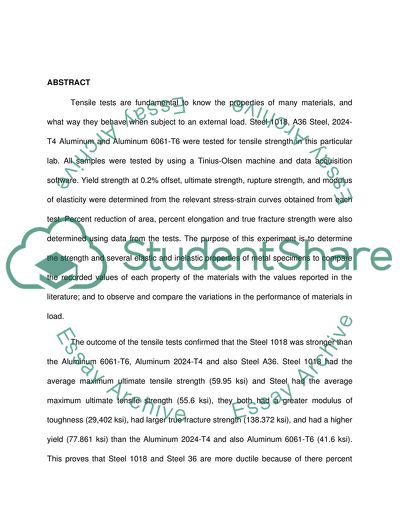Cite this document
(Measuring Tensile Properties of Metal Specimens Essay Example | Topics and Well Written Essays - 2750 words, n.d.)
Measuring Tensile Properties of Metal Specimens Essay Example | Topics and Well Written Essays - 2750 words. https://studentshare.org/engineering-and-construction/1811037-lab-report-tensile-test
Measuring Tensile Properties of Metal Specimens Essay Example | Topics and Well Written Essays - 2750 words. https://studentshare.org/engineering-and-construction/1811037-lab-report-tensile-test
(Measuring Tensile Properties of Metal Specimens Essay Example | Topics and Well Written Essays - 2750 Words)
Measuring Tensile Properties of Metal Specimens Essay Example | Topics and Well Written Essays - 2750 Words. https://studentshare.org/engineering-and-construction/1811037-lab-report-tensile-test.
Measuring Tensile Properties of Metal Specimens Essay Example | Topics and Well Written Essays - 2750 Words. https://studentshare.org/engineering-and-construction/1811037-lab-report-tensile-test.
“Measuring Tensile Properties of Metal Specimens Essay Example | Topics and Well Written Essays - 2750 Words”. https://studentshare.org/engineering-and-construction/1811037-lab-report-tensile-test.


